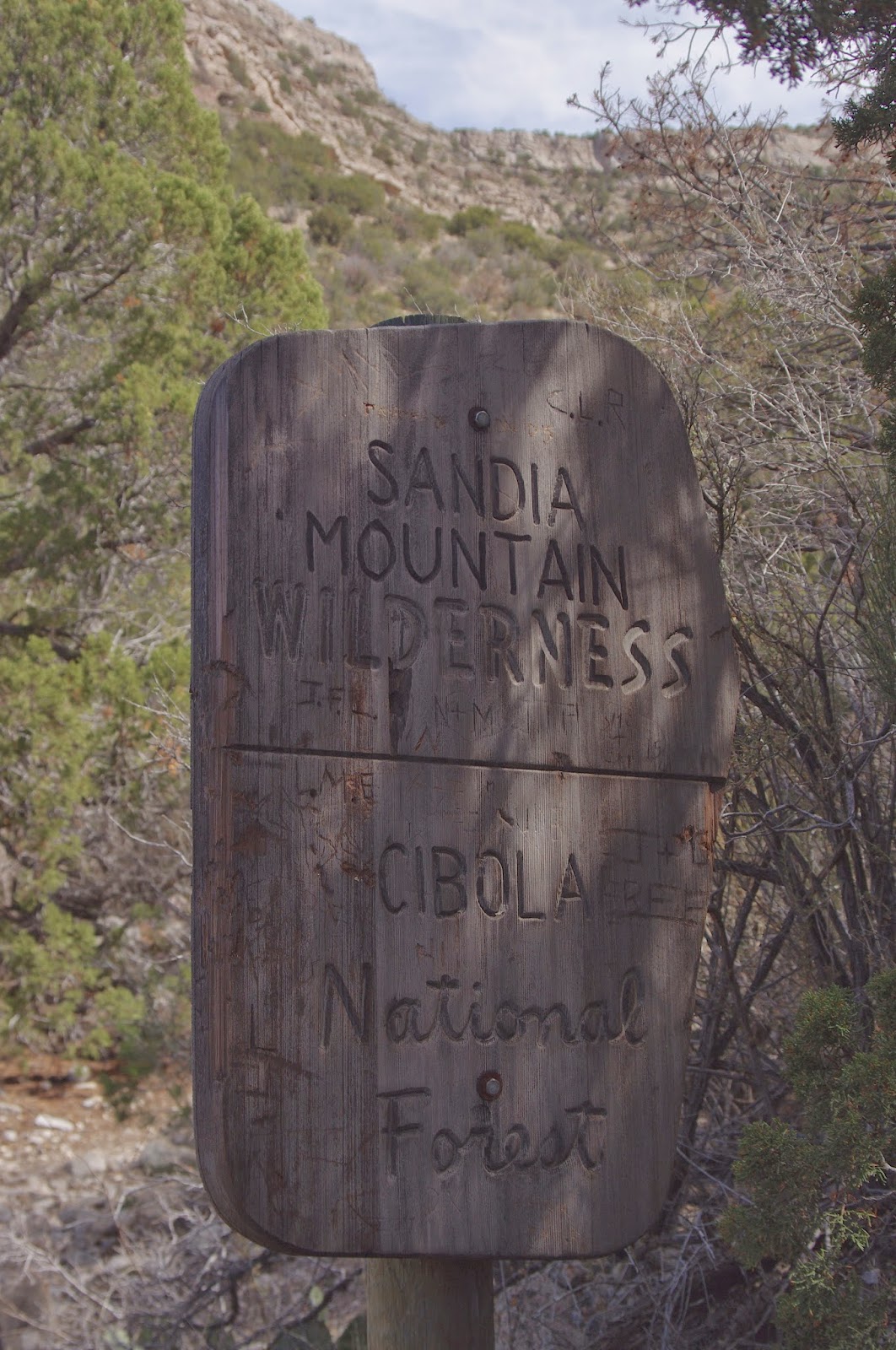Gila Wilderness - Natural Arch Canyon near Lake Roberts, Gila National Forest
 |
| The arch |
I parked at the Vista Village parking lot( or Austin Roberts Vista parking lot) right off of NM 35, and immediately headed north on the grassy juniper studded mesa. I came to a very old " Gila Primitive Area" sign at a fence passage for hikers. Whatever road or trail that once came this way has long disappeared. Shortly afterward, I began crossing the the upper end of one drainage and then ascended to a narrow mesa to cross a second. Both of these canyons had slot potential downstream, but I was determined to see this other canyon. If you're wondering why I was taking this upland route, it's because the mouth of that canyon as well as the two I crossed are on private property, which was very inconvenient and helped to turn much of my day's hiking into a trudge along mesa tops instead exploring down in the canyons.

Eventually, I reached a small crossways saddle, where I began to descend a very small side canyon that would lead to the main canyon that I was after. It had an active spring, and heavy vegetation in its upper reaches, but eventually turned into a short bedrock slot that took us( Seamus and I) to the larger canyon. We first explored upstream in the much larger and deeper canyon, which had flowing water and willow growth in its bottom, although it was still mostly bare conglomerate bedrock. We were stopped from further progress by a waterfall and proceeded to turn downstream. As we were arriving at the deepest( between 60 and 80 feet ), most slot-like section, we were stopped by another waterfall. This one was more of straight drop than a slide,with a pool several feet deep at the bottom. I contemplated the situation for long time- wondering how I could get myself, my dog and my stuff all safely down. I decided, with much regret , that it wasn't a good bet, and now began to backtrack.




 |
| The waterfall that stopped us- higher than it looks |
We were now right above that dastardly, above mentioned waterfall, when I noticed a lovely little natural arch right in front of us just across the canyon. It was right at the spot I wanted to explore most, where a side slot met the main canyon. I kept thinking, there might be another arch or a natural bridge in the side canyon, but the maze of rock ribs and walls prevented me from knowing for sure. Seeing the arch was a nice compensation for not getting to explore down in the canyon bottom, but not nearly enough. We began to head back.

Labels: hiking





















































